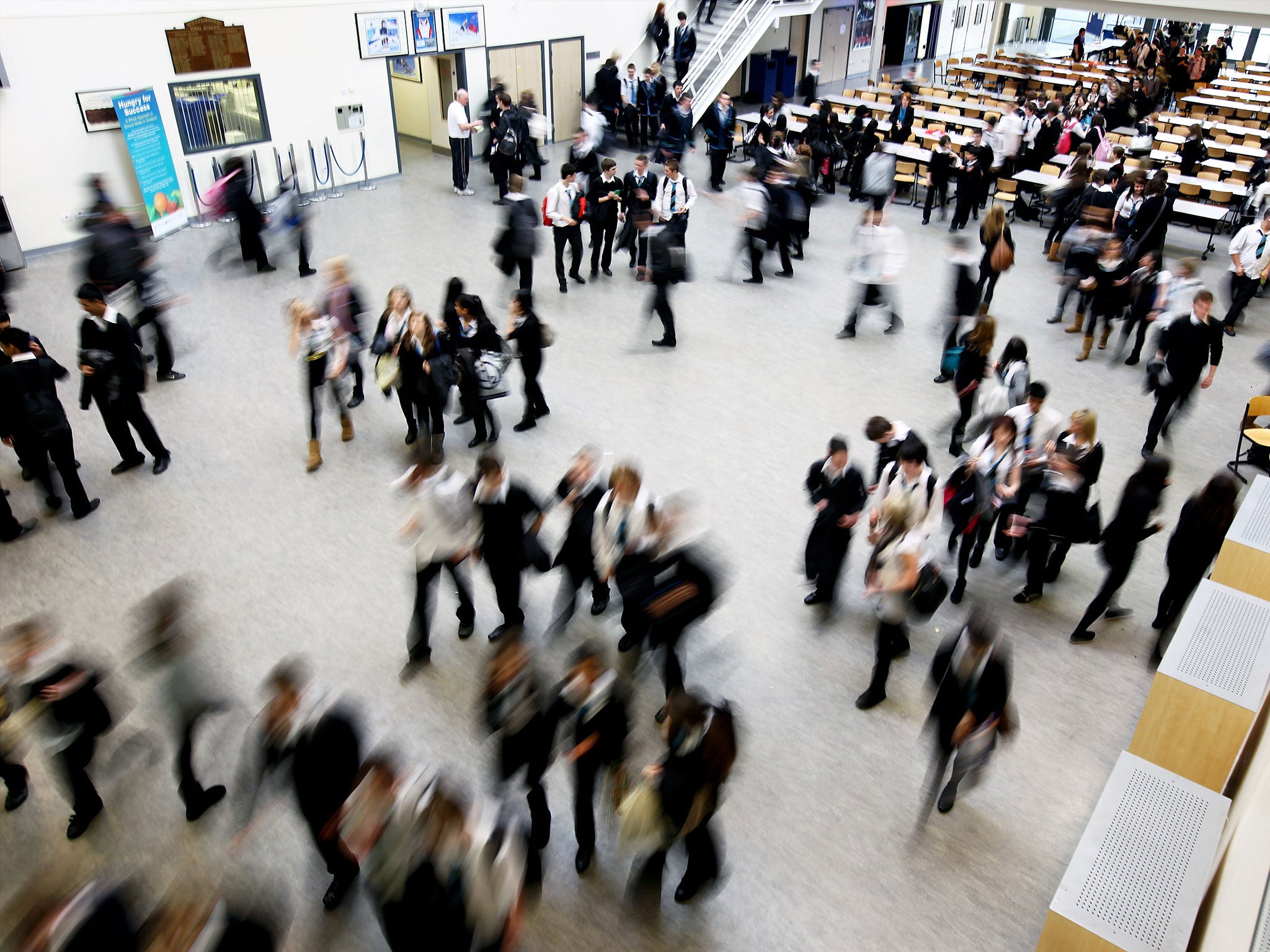More than half of secondary schools either full or over capacity in Year 7
Government dismisses claims as 'fundamentally misleading'

Your support helps us to tell the story
From reproductive rights to climate change to Big Tech, The Independent is on the ground when the story is developing. Whether it's investigating the financials of Elon Musk's pro-Trump PAC or producing our latest documentary, 'The A Word', which shines a light on the American women fighting for reproductive rights, we know how important it is to parse out the facts from the messaging.
At such a critical moment in US history, we need reporters on the ground. Your donation allows us to keep sending journalists to speak to both sides of the story.
The Independent is trusted by Americans across the entire political spectrum. And unlike many other quality news outlets, we choose not to lock Americans out of our reporting and analysis with paywalls. We believe quality journalism should be available to everyone, paid for by those who can afford it.
Your support makes all the difference.More than half of all secondary schools in England are either full or over capacity for year seven pupils, according to new data.
A study of school places, with data collected from 100 councils across the country, have revealed that the current number of schools that are struggling with pupil numbers is at 53 per cent, up from 44 per cent in 2015.
It is not just year seven pupils: the analysis shows that 40 per cent of secondary schools are full or crowded overall.
The numbers, obtained by the Liberal Democrats, come after the Local Government Association warned that 125,000 children could lose out on a school place by 2022.
Layla Moran, Liberal Democrat Shadow Education Secretary, described the situation as a “growing school places crisis”, with more crowded classrooms and overworked teachers.
“Every parent should be able to send their child to a decent school in their local area. That is why we would invest £7bn in our schools to expand school places and ensure no child is left behind,” she said.
"Instead, the Government is cutting per pupil funding and spending millions on free schools, many of which open in areas where there's no shortage of places."
In Rutland, secondary schools face 86 per cent overcapacity, the highest proportion cited in the study.
Roger Outwin-Flinders, headmaster at Brooke Priory School, an independent preparatory school for pupils between two and 11 years, told The Independent that rising house prices in London and a direct train to the capital have resulted in a surge in the number of young families moving to Rutland.
"There is definitely a lack of choice of state schools in the area," he said.
He said that parents might end up “driving past good schools in the morning to get to another school that wasn’t their choice” and causing heavy traffic. Some pupils can be assigned school places up to 15 miles away – a difficulty for children who live in the countryside.
He added: “This is a good opportunity for the government to re-think its educational strategy.”
Meg Lucas, headteacher at nearby Whissendine CE Primary School, said the issue was “an increasing problem” at her school.
“We are fortunate enough that Whissendine CE Primary School is a popular school with wonderful children, families and staff, however it is becoming increasingly difficult for children to get places at the secondary school of their choice,” she said.
She added: “As more schools join Multi-Academy Trusts for educational support and financial stability, it could mean super schools are in great danger of being over-looked. In truth we are already seeing this emerge as an issue for us.”
A spokesperson for the Department of Education dismissed the figures as “fundamentally misleading” and added that there are 15,500 more teachers since 2010.
“We fund local authorities to provide school places for every pupil based on their own forecasts.
“The result is that the vast majority of parents secure a place for their child at their first choice of secondary school – 83.5 per cent this year, with more than 94 per cent having received offers at one of their top three choices.
“We have created 735,000 new school places since 2010 – with 136,000 more in the last year alone. We have allocated £5.8bn of funding between 2015 and 2020 to make sure local authorities can provide all the places they need in future.”
Join our commenting forum
Join thought-provoking conversations, follow other Independent readers and see their replies
Comments